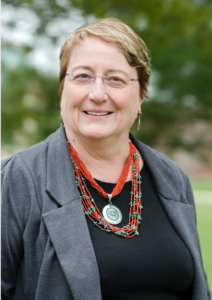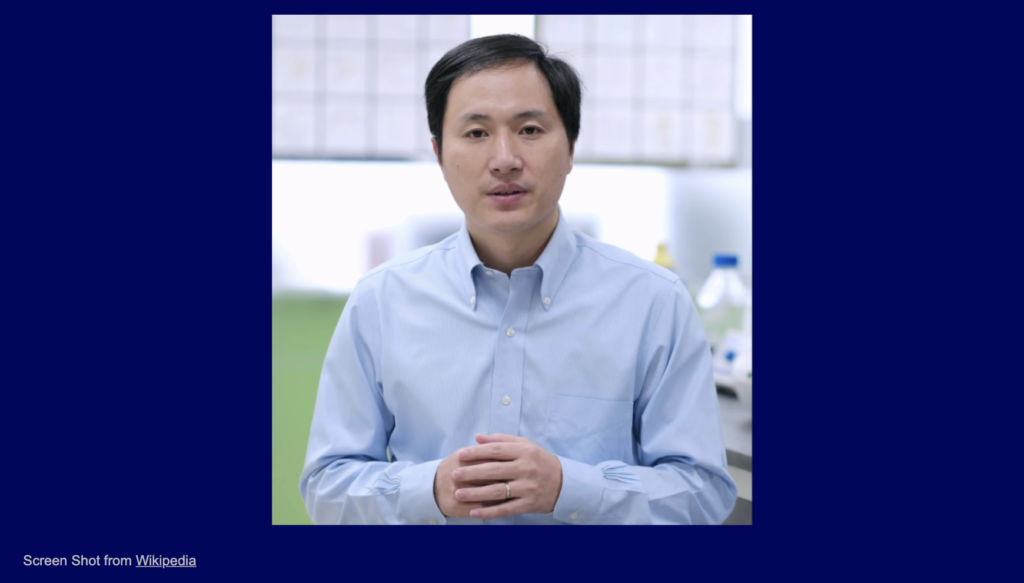 Joyce A. Shelton, Ph.D.
Joyce A. Shelton, Ph.D.
Professor of Biology Emerita
Trinity International University
Remember He Jiankui? He is the Chinese scientist who used CRISPR technology to edit the CCR5 gene for the HIV receptor in the genomes of human embryos. His goal was to make them HIV resistant. He reported at an international conference in 2018 that two of the edited embryos had resulted in the live births of non-identical twins, Nana and Lulu. There were also reports of a third child born in 2019. His revelations in a public forum provoked moral outrage from the scientific community. Global pressure caused Chinese authorities to suspend He’s research activities. Chinese authorities subsequently announced that he was guilty of forging documents and unethical research conduct that included improper informed consent and lack of external approval among other ethical concerns. They sentenced him to 3 years in prison with a hefty fine. (1)
Moral outrage, rightly expressed, focused international attention on the dangerously irresponsible nature of He’s experiments. Scores of papers and news stories addressed these issues. Because of He’s actions, scientists called for a global moratorium on using CRISPR to edit human embryos that will be brought to term (2). In addition, a WHO commission was appointed to determine guidelines for future use of CRISPR and germ line editing (3). Even so, three years on now and contemplating He Jiankui’s recent release from jail, we are still pondering our moral responsibility when unethical or harmful research affects the lives of vulnerable individuals and perhaps even those of future generations. For the first time, two Chinese bioethicists, Qiu Renzong and Lei Ruipeng have questioned what is being done to assure the long term health of the children whose genomes were altered (4). It is difficult to know if any consideration has been given to these children or even if they are still alive, because China has kept them anonymous. Nevertheless, Qiu and Lei are proposing regular genome monitoring for the twins and their future children. Concerns that the children could have long term health issues are justified (5), but regular invasive testing turns them, without consent, into lifelong research subjects, preventing any possibility for a normal life and adding to potential social and psychological harm. The consequences of the experiments only multiply. Nana and Lulu, who had no say in what was done to them, are forced to live with the consequences.
Children are defenseless, powerless persons who deserve our protection and care. At least in the United States, the Common Rule provides some legal protection for children against risky research (6). Any risk, however minimal, must be outweighed by the benefits. The law incorporates provisions for research related injury, but there are few legal guarantees of long term post trial care for a harmed subject (7). He Jiankui’s research, by all evaluations, went well beyond moderate risk and it is questionable whether it was at all beneficial either to the children or to the general society (8). The Chinese bioethicists suggest that He should bear some ongoing responsibility for the welfare of Nana and Lulu (4). I agree. The principle investigator is, however, only one of a number of responsible stakeholders when experiments involving vulnerable children go wrong. Included are the research team, research institution, government, funding agency, parents, and society at large.
CRISPR is being used successfully and has the potential to cure a host of serious genetic diseases. But, it is not yet foolproof. As far as we know, there have been no further human embryos subjected to this “treatment”, but He Jiankui’s embryos will not remain the only genetically altered human beings for whom the risk outweighs the benefit. Although neither the FDA nor the NIH will currently approve human germ line modification research (9,10) and numerous countries and agencies have concluded that it is still too risky (11,12), there are those who desire to continue this type of research (13,14,15). The laws governing genetic editing of human embryos are not global and not near extensive enough (16). As Jennifer Doudna, Nobel laureate for her work with CRISPR, said, “Once the details of He’s work were revealed, it became clear enough that although human embryo editing is relatively easy to achieve, it is difficult to do well and with responsibility for lifelong health outcomes” (17). Embryos become children, children become adults who have their own children. Germ line alterations are forever, and it is the children who will pay for our mistakes.
The Tennessee Center for Bioethics & Culture encourages respectful discussion and debate of bioethics issues, and strongly supports freedom of speech. To that end, we invite and welcome other voices to the discussion of bioethics issues. Invited authors’ views are their own, and do not necessarily represent those of The Tennessee Center for Bioethics & Culture.
References
1. For a comprehensive summary, see Greely, H.T. (2019). CRISPR’d babies: human germ line genome editing in the “He Jiankui affair”. Journal of Law and the Biosciences, 6, 111-183. Published online 2019 Aug 13. accessed 3.15.22
2. Lander, E.S., Baylis,F., Zheng F., Charpentier,E., Berg,P., Bourgain,C., Friedrich,B., Joung J.K., Li, J., Liu, D., Naldini, L., Nie, J-B, Qiu, R., Schoene-Seifer, B., Shao, F., Terry, S,, Wei, W., Winnacker, E-L. (2019). Adopt a moratorium on heritable genome editing. Nature, 567, 165-168. accessed 3.17.22
3. World Health Organization Expert Advisory Committee for Developing Global Standards for Governance and Oversight of Human Genome Editing. (2021). Human genome editing: a framework for governance, publication by the World Health Organization. accessed 3.17.22
4. Mallapaty, S. (2022). How to protect the first ‘CRISPR babies’ prompts ethical debate. Nature, 603, 213-214. accessed 3.10.22
5. Cohen, J. (2019). Did CRISPR help or harm the first-ever gene edited babies? Science News. accessed 3.16.22
6. Code of Federal Regulations, Title 45 Part 46 Subpart D (46.406), Additional Protections for Children Involved as Subjects in Research, Department of Health and Human Services. accessed 3.16.22
7. Code of Federal Regulations, Title 45 Part 46 (46.116 b). Basic Protections for Human Subjects. Department of Health and Human Services. accessed 3.17.22
8. Yong, E. (2018). The CRISPR baby scandal gets worse by the day. The Atlantic (online). accessed 3.15.22
9. US Food and Drug Administration. (2018). Therapeutic cloning and genome modification. accessed 3.17.22
10. Collins, F. (2015). Statement on NIH funding of research using gene-editing technologies in human embryos. National Institutes of Health. accessed 3.17.22
11. Ledford, H. (2020). ‘CRISPR babies’ are still too risky, says influential panel. Nature News. accessed 3.15.22
12. National Human Genome Research Institute, What are the Ethical Concerns of Genome Editing? accessed 3.15.22
13. Gyngel,l C., Douglas, T., Savulescu, J. (2017). The ethics of germ line gene editing. Journal of Applied Philosophy, 34(4), 498-513. accessed 3.15.22
14. Schleidgen, S., et al.(2020). Human germ line editing in the era of CRISPR-Cas: risk and uncertainty, inter-generational responsibility, therapeutic legitimacy. BMC Medical Ethics (online), 21, article 87. accessed 3.15.22
15. Cohen, J. (2022) As Creator of ‘CRISPR Babies’ nears release from prison, where does embryo editing stand? Science News. accessed 3.22.22
16. National Academies of Sciences, Engineering, and Medicine; National Academy of Medicine; National Academy of Sciences; Committee on Human Gene Editing. (2017). Human genome editing: science, ethics, and governance. National Academies Press (US), International Research Oversight and Regulations. accessed 3.15.22
17. Doudna, J. (2019). CRISPR’s unwanted anniversary, Science 366: 777. accessed 3.15.22



